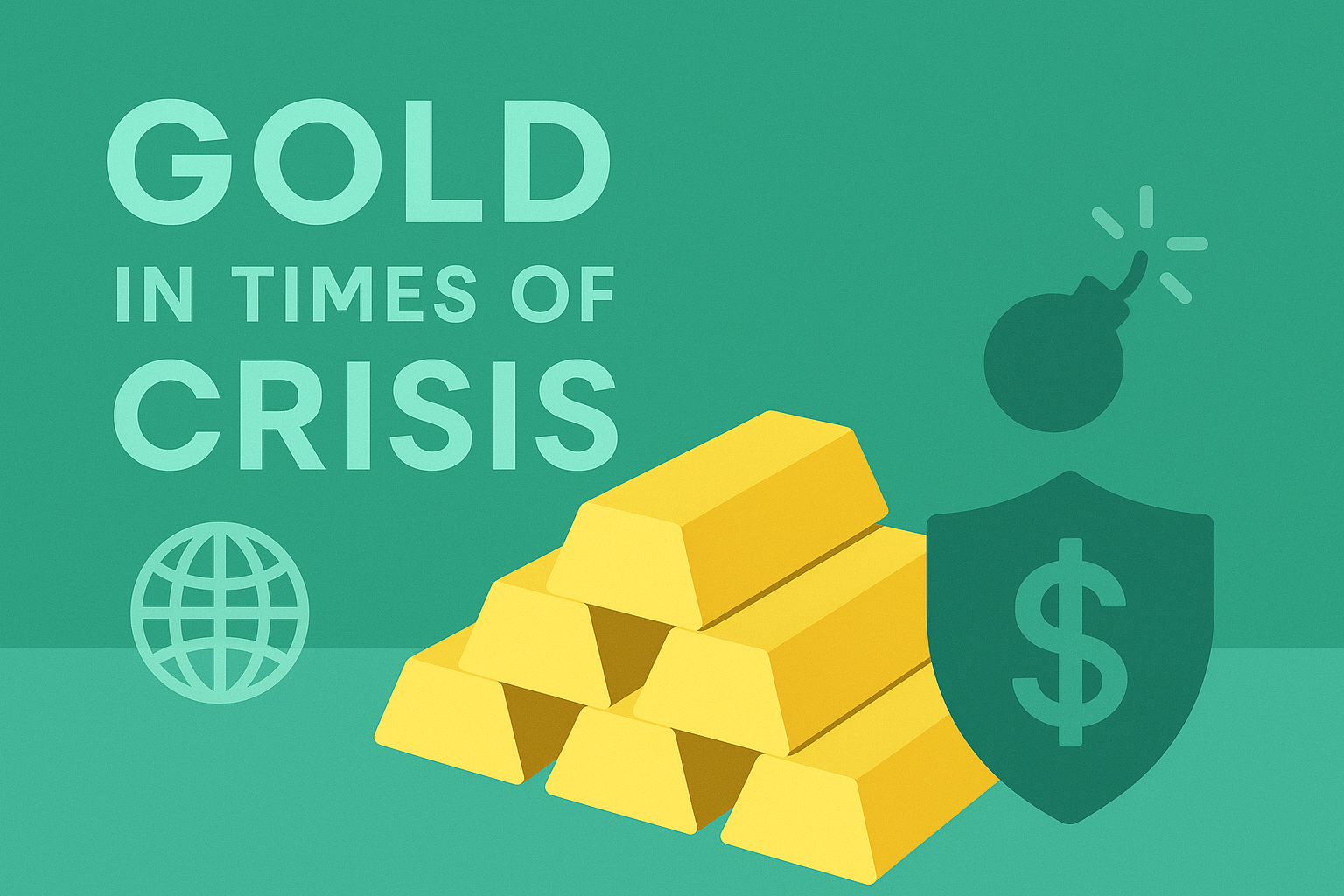— A Strategy for Facing Fear, Preparing Wisely, and Living Calmly —
Here is the full English version of the report titled “Gold in Times of Crisis”, structured for professional readers:
Gold in Times of Crisis
- — A Strategy for Facing Fear, Preparing Wisely, and Living Calmly —
- Introduction: What Gold Represents in an Unstable World
- Chapter 1: Why Gold Is Called the “Ultimate Safe Asset”
- Chapter 2: When and How to Own Gold Strategically
- Chapter 3: A Broader Life Strategy for the Age of Crisis
- Conclusion: Owning Gold Is About Psychological Readiness
- Appendix: Recommended Gold Strategies by Profile
— A Strategy for Facing Fear, Preparing Wisely, and Living Calmly —
Introduction: What Gold Represents in an Unstable World
As we navigate the latter half of the 2020s, the global landscape is once again defined by geopolitical risks. From the war in Ukraine and escalating tensions in the Middle East to the instability in U.S. politics and growing concerns over the future of the global currency system, the age of peace and predictability has ended.
In times of crisis, individuals seek refuge—not only physically, but also financially. In this context, gold has long been recognized as a safe haven asset. However, merely buying gold is not a strategy. Surviving an age of uncertainty requires more: the ability to face fear rationally, prepare with foresight, and respond with composure.
This report explores the deeper meaning and strategic role of gold in modern times.
Chapter 1: Why Gold Is Called the “Ultimate Safe Asset”
1-1. When Money Is Distrusted, What Do People Trust?
- Fiat currency is based on the trust in central banks, while gold holds intrinsic value.
- Throughout history—during wars, hyperinflation, and financial crises—gold has preserved purchasing power when paper money failed.
1-2. Why Central Banks and the Wealthy Keep Buying Gold
- Since 2022, central banks in countries like China, Russia, and Turkey have accelerated gold purchases.
- These actions reflect a shift toward currency diversification, sanction evasion, and digital currency transition readiness.
Chapter 2: When and How to Own Gold Strategically
2-1. Don’t Wait for Panic: Prepare During Calm Periods
- Gold tends to rise before crises fully unfold. Don’t chase it in a panic.
- Use dollar-cost averaging (DCA) to accumulate steadily and reduce timing risks.
2-2. Diversified Ways to Hold Gold
| Holding Type | Characteristics | Risk Management |
|---|---|---|
| Physical (coins, bullion) | Tangible, usable during emergencies | Use secure home safes or vaults |
| Gold ETFs (e.g., GLD) | Liquid, easy to trade | May be inaccessible during financial system shutdowns |
| Digital gold / savings plans | Accessible with small investments | Check storage location and provider solvency |
Chapter 3: A Broader Life Strategy for the Age of Crisis
3-1. Gold Is Only One Part of a Defensive Framework
- Gold does not generate income, so limiting exposure to 5–15% of total assets is prudent.
- Combine with a well-diversified portfolio: stocks, bonds, cash, and commodities.
3-2. Think of Gold as a “Perspective,” Not Just a “Protection”
- Holding gold symbolizes independence from blind trust in fiat systems.
- It encourages a mindset of autonomy, resilience, and systemic awareness.
3-3. In Total Collapse, What Truly Holds Value?
- At the core, skills, trust, and philosophy outweigh any asset.
- Gold serves as a transitional tool, not an end—it helps buy time, but cannot buy wisdom.
Conclusion: Owning Gold Is About Psychological Readiness
Buying gold is not about fear—it’s about clarity.
Those who prepare wisely do not panic. They act.
The true value of gold lies not only in its metal content but in its symbolic power:
the freedom to think for oneself when the world demands conformity.
Appendix: Recommended Gold Strategies by Profile
| Profile Type | Suggested Strategy |
|---|---|
| Families with children | Buy small gold bars regularly, use it as a financial literacy tool |
| Urban residents / Disaster-conscious | Gold coins with high mobility, combined with foreign currencies |
| Long-term investors | Mix gold ETFs with U.S. Treasuries and hedged gold mining stocks |
| Business owners / HNWIs | Overseas gold storage and geopolitical risk hedging via family offices |


